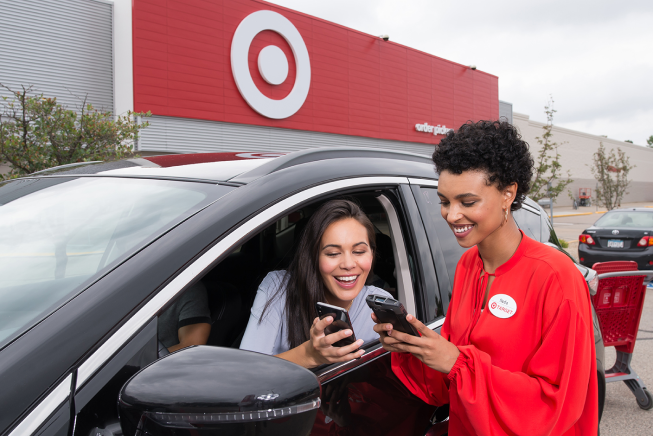Article: 5-min Read
What the next generation can teach us about the future of e-commerce.
Renu Liddell
Vice President of Digital Site Merchandising at Target Corporation
Vice President of Digital Site Merchandising at Target Corporation
Breakneck—that’s how fast consumers’ expectations around e-commerce are changing. Each day is an acceleration toward the future of e-commerce and an evolved guest experience, and brands are struggling to keep a pulse on where e-commerce is heading.
In a world in which we expect and adapt to change one day at a time, it’s hard to look forward and imagine what the future holds for us. How much personalization is enough and achievable? What will in-person experiences look like? How do we create engaging customer experiences in an ever-connected world?
Before we start debating what’s next in e-commerce, let’s look at what we’re doing today to reach our audiences.
Over the unusual year and a half that’s passed, Target’s philosophy on e-commerce hasn’t changed: deliver joy for our guests. Yet, the way we fulfill that e-commerce promise has adapted and accelerated to meet customers’ evolving needs.
We learned that joy has a different meaning for everyone. It’s the joy of time saved by using same-day services (like Drive Up and Order Pickup), finding an item at a great price, or discovering just the right last-minute gifts as they search.
>270% overall growth for same-day delivery
>700% growth for Drive Up
>60% growth for Order Pickup
>350% growth for Shipt
~55% overall growth for same-day services
>80% growth for Drive Up
~20% growth for Order Pickup
>30% growth for Shipt

By creating an experience that meets guests’ expectations (for example, delivering the best Drive Up experience that feels in unison with our digital and in-store experiences), we’re building trust. When we consistently deliver on that experience, online and in-person, that trust strengthens. And we believe trust will continue to be a crucial currency in the future of e-commerce.
But how do we know what the future of e-commerce looks like and which trends will stick? Well, let’s ask the future.
To truly understand what the guest experience will look like in 10-plus years, let’s ask the youth. I watch my children, ages 3, 5, and 7, and their expectations around technology and shopping are vastly different than mine.
While our current customers inform us about today’s e-commerce experiences, we must listen to the next generation to peek into the future of e-commerce. Here are three trends worth watching:
Kids today are in touch and empathetic. Their values lean more progressive than generations before them, and they listen to influencers who reflect their values.
Insights:2
Teens say caring for the planet is more important (44%) than caring about what their peers think of them (28%) or having the latest fashion (23%).
The top three most important concerns for teens are helping people (61%), ensuring everyone is treated the same (55%), and protecting people from bullying (45%).
Impact:
The mindset of 8-to15-year-olds can give clues to their preferences and digital needs, indicating where trends may shift in the future. These clues affect what and how brands sell and position themselves.
Equality, inclusion, and environmental activism are essential to this group, and they want to see these values reflected in the brands they admire.
Without a doubt, gaming is a predominant outlet for nearly every kid, beating out 30-plus other interests, including music and TV. And with smartphones, they have greater, easier access to these outlets than ever before.
Insights:2
As many as 93% of boys aged 8 to 11 and 79% of girls aged 12 to 15 say they’ve played video games in the past month.
65% of kids aged 8 to 11 own or have access to a mobile phone at home.
Impact:
Kids’ immersive digital behavior helps us understand how this generation might react to new and creative e-commerce experiences. Will shopping become more gamified? Or maybe, just maybe, our “Clueless” dreams will come true, and we can mix and match outfits like Cher Horowitz to send to our friends via social channels before purchasing.
Kids and teens are taking social media engagement to a whole new level. While platforms like Facebook have shown staying power, trends point to younger audiences shunning traditional social channels for video-based ones.
Insights:2
Finding funny posts is the #1 reason teens use social media (62%), followed by searching for things they want to buy (54%).
Monthly usage of TikTok among Gen Z more than tripled between 2019 (11%) and Q3 2020 (34%).
Impact:
Once these kids become adults, where do brands need to be visible? Will incorporating humor lead to higher engagement? The content our teens respond to can give us clues about where the industry might be heading and how brands can establish enduring bonds with their evolving audiences.
Yes, those kids who are glued to their phones. The teens who taught us how to use TikTok and got us hooked on Minecraft. The ones who care about the planet and the ones who want to address bullying.
But to build meaningful, flexible, and personal guest experiences, we need to create experiences that speak to audiences the way they want to engage with brands.
At Target, we put the guest at the center of everything we do, so we built a media network that does that, too. RoundelTM develops media solutions that seamlessly fit within the guest experience for the way people shop, even as that method changes.
Contact us or your Sales Representative to learn about how we’re re-imagining media to work better for brands. Or view Our Solutions.

Vice President of Digital Site Merchandising at Target Corporation
Renu joined Target in 2004. In her role as Vice President of Digital Site Merchandising, Renu leads teams across Target to create relevant guest experiences digitally on Target.com and the Target App. She works cross-functionally to bring these experiences to guests and to create brand equity that drives financial outcomes. Renu also co-sponsors the Asian Business council at Target to champion an inclusive work environment where Asian team members find belonging and growth.
Prior to her roles in digital, she gained experience in merchandising (inventory, buying, and planning). Renu also serves at the Greater Minneapolis Crisis Nursery as a financial committee member. She received her Bachelor of Business Administration & Marketing from the University of Arizona. Renu resides in Minneapolis with her husband and three children.
Subscribe for the latest news and updates
Source
1Target.com, “Target Q2 2021 Highlights,” investors.target.com/static-files/1598c38b-841b-448d-8263-8de88c2e3049 (accessed September 20, 2021).
2Global Web Index, “Kids these days: what to know about your younger audiences,” 2021 report, gwi.com/reports/understanding-young-consumers (accessed August 9, 2021).